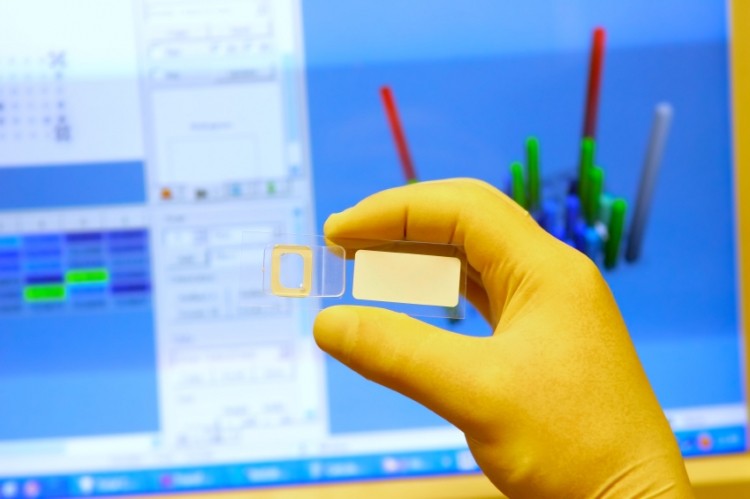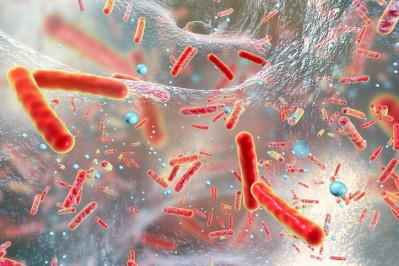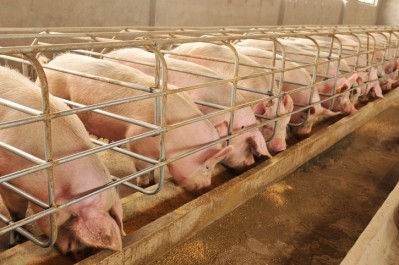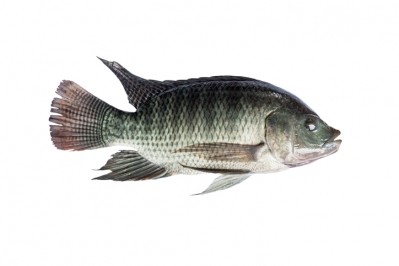Special Edition: Gut Health
Nutriad: Weighing up AGP alternatives for poultry

Dr Goosens, who is Nutriad’s business development manager, digestive performance, told FeedNavigator the company is currently working with Wageningen and Gent universities to determine which parts of the intestinal tract butyrate needs to reach for maximum effect.
“So far we have seen that the greatest benefit is derived when butyrate is delivered throughout the intestinal tract, and in particular to the hindgut,” he said.
Butyrate, a short chain fatty acid, has been used as an active ingredient in feed formulations for over 20 years, but more recently, has attracted attention for its potential as an AGP replacer.
Besides short- and medium-chain fatty acids, a number of other antimicrobial alternatives have emerged, including botanicals, such as garlic and alliin based extracts, probiotic strains, yeasts, enzymes and monoglycerides.
Making the leap from lab to live bird
However, in a presentation on ‘enhancing the biosecurity of the young chick’s gut’ at ABC (Antibiotic Resistance, Biosecurity & Consumers Challenge) Asia earlier this month, Dr Goossens told delegates that not all of these antimicrobials were able to replicate their in vitro performance in a real life gut environment.
“It is very tempting to assume that when you obtain good results in the lab from certain antimicrobials, they are the ones to try in vivo, but this isn’t always the case,” he said.
Dr Goossens presented results from the EU-funded ‘CAMPYBRO’ study, which looked at the effiicacy of 24 gut feed additives at reducing caecal Campylobacter counts in vivo (in broilers).
He pointed out that components that had been shown to have a “strong antibacterial effect” in lab conditions, such as essential oil components or monoglycerides of short- and medium-chain fatty acids, didn’t necessarily perform better in comparison to other products, for which such an in vitro bacteriostatic effect was less pronounced.
Dr Goossens explained that this might have to do with metabolic activities that have to be taken into account.
“Monoglycerides, for example, will be rapidly cleaved when lipase is secreted in the digestive tract, thereby reducing their direct antibacterial effect. Similarly, many phytochemicals have been described to be absorbed quickly in the gut. On the other hand, chemicals that don’t kill Campylobacter, but interfere with its colonization pathways, such as butyrate, might be more effective in restricting intestinal Campylobacter growth. That is, provided they are delivered to the hindgut, where these bacteria reside.”
Targeted delivery key
The additive that came out in top in the study was a precision delivery coated butyrate (PDCB) - Nutriad’s Adimix Precision, a result that Dr Goossens attributes to its hi-tech coating and ability to deliver to the hindgut.
“There are a lot of butyrate products on the market with a 30:70 butyrate:fat ratio. Ours is one of the few that is able to deliver to the entire intestinal tract.”
But although Adimix Precision has been shown to be an effective AGP replacer, Dr Goossens was keen to emphasize the point that no antimicrobials or gut health additives represent ‘like for like’ AGP replacers - all have different modes of functionality.
For example, he cited a trial in which PDCB was found to mitigate the negative effects of necrotic enteritis - a disease caused by toxins produced by Clostridium perfringens as it grows in the intestinal tract of birds - increasing final weight and improving FCR. However, these performance benefits did not go hand in hand with a reduced clostridium perfringens count in the birds; in other words, the PDCB was not killing the bacteria.
“We didn’t see a significant reduction of clostridium perfringens, so it wasn’t that this butyrate product was killing the bacteria,” said Dr Goossens.
However, when the researchers looked at lesions in the birds, they were far less severe in those birds treated with PDCB.
“That this is because butyrate works to enhance wound healing and intestinal integrity rather than by killing the pathogenic bacteria. Understanding the different modes of action of gut health additives is crucial if we are to develop outstanding alternatives to AGPs.”








